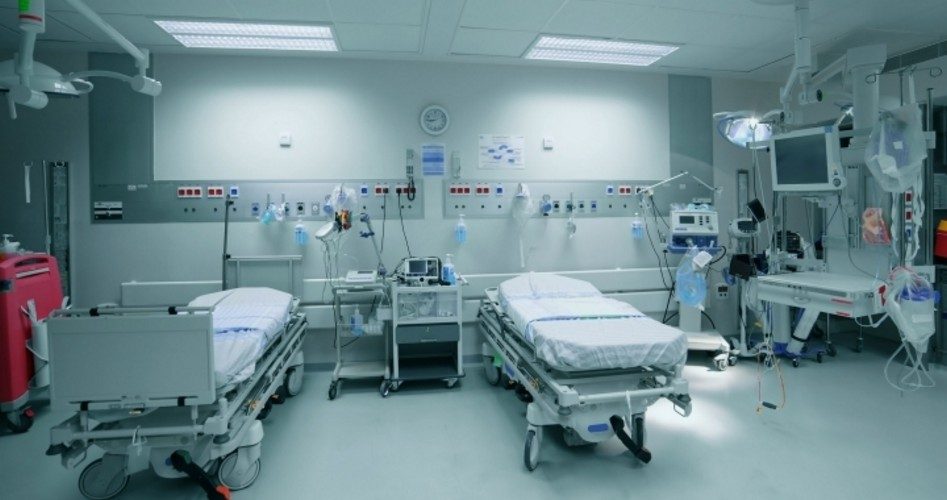
On March 31, the White House’s coronavirus task force gave its “best case” scenario: between 100,000 and 200,000 Americans would die from the virus, with the daily number peaking over the next two weeks. One of the lead members of that task force, Dr. Anthony Fauci, called the numbers “sobering”: “As sobering a number as [100,000] deaths is, we should be prepared for it. Is it going to be that much? I hope not.”
Based on models he had seen, Professor Bill Hanage at Harvard’s T.H. Dhan School of Public Health told reporters that those numbers “certainly seem to be within the reasonable framework. I would not be particularly surprised by them. I wouldn’t be surprised if they were higher. I wouldn’t be actually surprised if they were lower.”
But then he added this caveat: “One of the things that’s difficult for those of us who’ve been involved in modeling is communicating the amounts of uncertainty that we have.”
Fauci and Dr. Deborah Birx, the coordinator of the task force, were relying on these models forecasting the spread of the virus, including particularly one prepared by the University of Washington’s Institute for Health Metrics and Evaluation (IHME). It was released the day before Fauci’s announcement, and concluded that the spread of the virus was likely going to overwhelm the country’s healthcare system, particularly the need for hospital beds:
Using a statistical model, we predict excess demand will be 64,175 total beds … even with social distancing measures enacted and sustained, the peak demand for hospital services due to the COVID-19 pandemic is likely going to exceed [present available] capacity substantially….
The epidemic in the US will place a load well beyond the current capacity of hospitals to manage.
On Sunday, the IHME revised its estimate downward: The shortage in hospital beds is now 36,654, more than 40 percent less than previously estimated. It also substantially revised downward the need for ICU beds and ventilators:
• From 262,092 hospital beds initially, to 140,823 beds;
• From 39,727 ICU beds initially, to 29,210; and
• From 31,782 ventilators initially, to 24,828.
No apology was forthcoming from Dr. Christopher Murray, the IHME’s director, who said, “As we obtain more data and more precise data, the forecasts we at IHME created have become more accurate.”
It’s like predicting the weather, said Caitlin Rivers, assistant professor at the Johns Hopkins Center for Health Security, but with a very important difference: “Unlike the weather, which we’re all accustomed to and incorporating forecasts into decision making, with pandemics we actually influence the outcome.”
The “outcome” from decisions based on faulty or incomplete modeling is already being felt: Hospitals are putting off “non-elective” surgical procedures to make room for the expected flood of patients infected with the virus. The National Guard is already building temporary hospitals on parking lots close to hospitals to house the expected overflow.
This is to say nothing about the economic damage already inflicted on the U.S. economy following decisions to shut it down in order to keep people from interacting with each other and spreading the virus. As The New American reported, up to 40 percent of small businesses are in danger of shutting their doors permanently within the next 30 days in light of those restrictions.
The good news is that it appears the models were inaccurate about the timing of the “peak” or the “flattening of the curve” of those dying from the virus. According to the Worldometer reference website, the number of new cases reported on April 4 was 34,196. One day later, on April 5, the number of new cases reported fell to 25,316.
And the number of new deaths being reported daily is slowing slightly as well, as seen on Worldometer’s logarithmic scale. This is confirmed by the New York Times’ Daily Tracker as well.
If this trend continues, the date of the release of the American economy from bondage may be closer than originally thought. Once the government removes its heavy boot from the oxygen hose that breathes life into the economy its resuscitation from its near-death experience will begin.
While much permanent damage has already been done in reaction to faulty or incomplete data that feeds the models and guides the decision makers, there are more than 150 million people still working in the United States. The pent-up demand for products and services that has been put on hold is building a tsunami that will be released once the “social-distancing” mandates have been removed.
Image: alexey_ds/iStock/Getty Images Plus
An Ivy League graduate and former investment advisor, Bob is a regular contributor to The New American, writing primarily on economics and politics. He can be reached at [email protected].
Related article:
Ipsos, Harris Polls Report Virus Shutdown Is Closing Small Businesses Permanently




